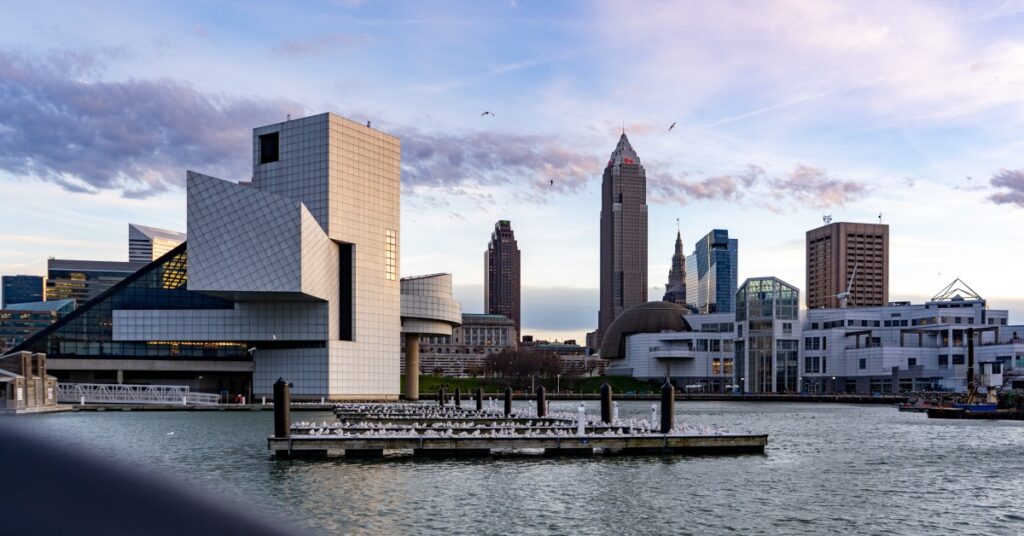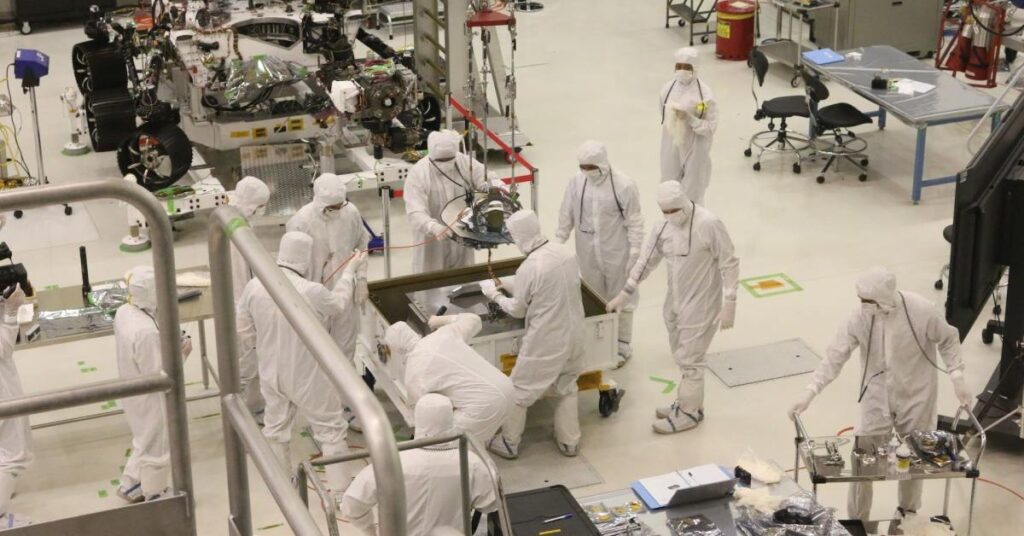
How to Choose an Online MBA
Online MBA programs make their degrees available to everyone everywhere, [...]

Creative directors are professionals who oversee the artistic direction of projects, products, brands, and entire companies. Many people associate this role with advertising, but creative directors work in a lot of different fields—some of which aren’t typically associated with creativity.
It’s probably not that surprising that there are creative directors working in game development companies, video production companies, publishing companies, and entertainment companies. But did you know that there are also plenty of creative directors who work for banks, technology firms, scientific research labs, pharmaceutical companies, and colleges and universities?
That’s good news for anyone who is looking for a creative career but is more interested in managing the people who actually produce creative output. You certainly could work for an advertising agency if your goal is to become a creative director, but you don’t have to. There are plenty of opportunities for creative directors outside of marketing and public relations—and a lot of different educational pathways you can take to get the skills and knowledge needed to take advantage of them.
In this article about how to become a creative director, we cover:
Given that this job title can be found in so many industries, a comprehensive list of responsibilities associated with the creative director position would be a long one. However, there are some tasks all creative directors handle, and those are the ones we’ll focus on here.
In general, creative directors are responsible for making high-level creative decisions and guiding artists and other creative types (e.g., copywriters, graphic designers, and artists) as they create assets (e.g., marketing materials, websites, video games, stage shows, or music videos) based on the creative director’s strategic decisions. Their day-to-day duties include:
| University and Program Name | Learn More |
|
Pepperdine University:
Online Master of Business Administration
|
|
|
Stevens Institute of Technology:
Online Master of Business Administration
|
|
|
The University of Tennessee:
Online Master of Business Administration
|
The difference between these two roles isn’t always clear. Some companies use the titles interchangeably. At others, creative directors are responsible for developing concepts and pitching them to stakeholders and clients for approval, while art directors manage the creatives who actually create the materials, products, or campaigns based on those concepts. Sometimes, though, it’s art directors who are responsible for coming up with concepts and stylistic guidelines; the creative directors manage the artists, writers, videographers, and other creatives who execute on that vision.
Creative director Chris Jones, for instance, describes his experience in this position this way: “My own role still involves some hands-on design/copywriting, but very often it’s about me taking the lead on a project, working with the client on the overall approach and then briefing my team to create something wonderful.”
Always read job listings carefully when you’re applying to open creative director positions. It’s the only way to guarantee that you’re sending your resume only to companies with expectations that are in line with your aspirations.
Creative directors shoulder a lot of responsibility, and they tend to be high earners. According to PayScale, the average creative director salary is about $89,000. Glassdoor’s estimate is higher at $127,000.
The reality is that most creative directors probably earn an annual salary that falls somewhere in the middle. Whether they earn five figures or six depends on whether they work for marketing agencies overseeing advertising campaigns or as in-house creative directors for brands.
Salaries in this role also vary by industry and by company size. There are large global firms that pay their creative directors well over $500,000. There are also creative directors and even executive creative directors working for small digital marketing agencies, retailers, and software development firms making $60,000 or less.
Because this is a career path with so many forks, it’s tough to summarize the specific hard skills a creative director needs.
A creative director working for a mobile game development firm needs technical skills (e.g., programming) that the creative director at a company that makes paper products probably isn’t required to have. All creative directors, however, have to be comfortable learning new editing software, design tools, and project management applications because technology is changing all the time.
Creative directors also need strong business and management skills. Their primary job is to motivate creatives to do their best work, and that takes the kind of strategic leadership that’s usually learned, not innate.
The obvious next question is, “What about art skills?” Being able to paint, draw, write, make music, or design a killer page layout is definitely an asset when you’re a creative director. Even so, creative directors don’t necessarily need Van Gogh-level artistic chops. It’s more important that they have an eye for art—specifically for whatever kinds of art will be most popular with the greatest number of people.
Because creative directors are managers, the skill set associated with this role also includes some soft skills.
Written and spoken communication skills and interpersonal skills are hugely important in this position. The creative director has to listen to and understand the needs of stakeholders and clients, translate those into a cohesive brand vision, and then communicate that vision in a way that creatives can understand.
Decision-making skills are a must-have part of the creative director’s skill set. These executives are responsible for choosing the direction creative projects take and for signing off on finished products. Both tasks require a high degree of decisiveness.
Creative directors also need highly-developed visual communications skills. They might not work directly on creative assets. Still, a large part of their job involves translating the wishes of executives into broad concepts that can include color guidelines, font guidelines, model choices, and more.
Trend identification skills are vital, too. Knowing what’s hot and what’s not in design is very important because stakeholders and clients want to see fresh, exciting ideas that will excite consumers, not the same old concepts.
To become a creative director, you will need to earn a bachelor’s degree. While there are some creative directors out there working with associate’s degrees, it’s not common: 84 percent of creative directors have a bachelor’s degree or higher. Figuring out which bachelor’s degree to earn is the hard part because there are creative directors in so many fields. Before choosing a major, think about what industry you’d like to work in when you become a creative director. You might choose:
Only 16 percent of creative directors have master’s degrees, which suggests that it’s common for people to work their way up into this position. Having a master’s degree in marketing, a marketing MBA, or an MFA will certainly be an asset when you’re applying for jobs, but it’s unlikely that employers will require you to have one—unless you’re applying for those high-paying positions at large global firms we mentioned earlier.
Experience tends to be more important than education when it comes to this role. A company looking to hire a creative director may require that job candidates have bachelor’s degrees or even master’s degrees. However, what they typically really want to see is a proven track record of success when it comes to leading creative projects or developing brand concepts.
If your goal is to become a creative director, you should start looking for opportunities to head up marketing, graphic design, product design, and branding projects—even tiny ones—as early on as possible in your career. Make sure that your managers know from day one that you want a chance to prove that you have what it takes to be a leader. The work experience you gain as a result will prove invaluable when you’re in the running for this position.
You’ll probably need at least seven to ten years of relevant professional experience to be hired as creative director. What that experience will look like will depend on whether you work in marketing, graphic design, software development, or another industry. You might launch your career as a copywriter, social media marketer, or graphic designer. You could also learn programming and work in web design or software development. UX design represents another good jumping-off point for aspiring creative directors.
We realize that’s frustratingly vague, but the upside is that all kinds of entry-level or junior level creative positions can prepare you to step into this role. The work you do in the early years of your career will give you valuable insight into what really goes into successful product development, branding initiatives, marketing campaigns, and media projects. Where you go from there will once again depend on your industry (and your industriousness). If you work in marketing, you might advance from junior copywriter to copywriter to senior copywriter to content lead before becoming a creative director. If you get your start in graphic design, you might work your way up to senior art director or senior graphic designer before landing in this role.
Estelle Pin, TINYpulse’s editor-in-chief and content marketing manager, may have put it best when she said, “There’s a misconception that a creative director needs to be the best designer or copywriter on a team–and that these are the skills that will get you the CD job. Certainly, being super-competent at design and copywriting are important to providing relevant feedback–but you get the best outputs when your top talent lives in your individual contributors, and focusing all of your energy on developing your creative skills can be problematic.”
Creative directors are strategic thinkers. Visionaries. Trend spotters. Data junkies. They don’t have to be artists, copywriters, graphic designers, videographers, or musicians because they’re not the ones transforming strategies into finished products. They supervise and guide. They’re senior managers, not creatives. You don’t need a portfolio of original art to apply for this job because most hiring managers are looking for candidates with a background in management and a history of overseeing profitable campaigns. You need to understand the creative process and to have a sense of what will resonate with consumers to do this job. However, your day-to-day responsibilities will involve nurturing concept development, project oversight, and human resources management.
To determine whether this is the right career for you, ask yourself the following: Will you be truly happy helping others create art designed to meet specific business goals? If you’re an artist at heart, you may be happier in a more creative role that lets you spend your days doing creative work. If, on the other hand, you have plenty of creative ideas and you believe those ideas plus the artistic talents of others can be leveraged to sell products, drive awareness, increase brand loyalty, or change people’s minds, then the creative director role might be a great fit.
Questions or feedback? Email editor@noodle.com

Online MBA programs make their degrees available to everyone everywhere, [...]

In 2004, Burton D. Morgan Foundation and other Cleveland organizations [...]

International marketers have to consider local language(s), local norms and [...]

Organizations must design facility layouts and workstations in a way [...]

Many aspiring entrepreneurs understand the basic idea that the firm [...]
Categorized as: Marketing & Advertising, Business & Management